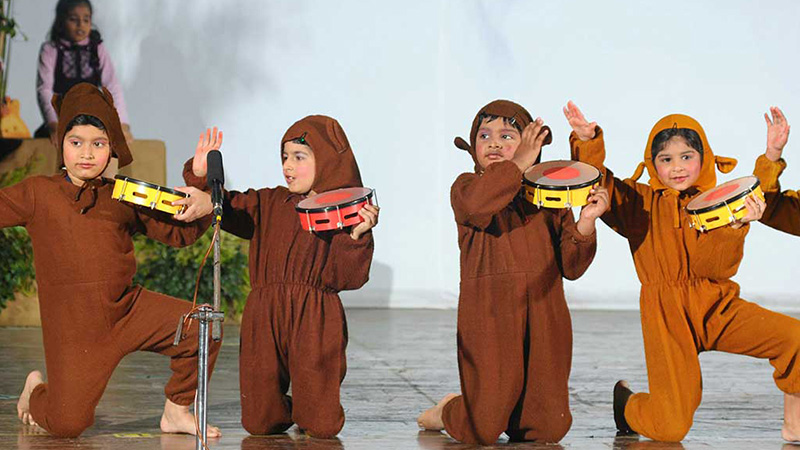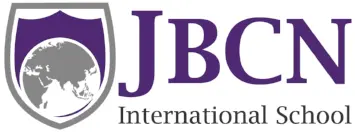
While each of our team of facilitators loves to get up, make plays and do theatre, we also knew somewhere in our hearts, that this could be a powerful thing for children. From our own experience of doing drama we knew instinctively that:
While we started here 8 years ago, we quickly learned this was not good enough, to just know these things instinctively: When a school like JBCN recognizes and entrusts us with their learners, we needed to be able to really make a case for Drama’s formal place in the education system.
I’d like to share with you what we learned, about drama’s role in the classroom, and how we were given the opportunity to place it into the rigorously thought out culture of best-practices that the JBCN framework provides.
10 Salient Studies on Arts in Education:
Drama and Learning the fundamental point of connection:
Drama comes from the greek, it means “To do”, every activity and exercise in a drama class, is based around doing, action, i.e. act-ing.
We all know from our personal experience, that we learn something much better when we have done it ourselves. You all know the famous chinese proverb (that is sometimes also attributed to Benjamin Franklin “Tell me and I forget, teach me and I may remember, involve me and I understand.
The actual proverb is by Xun-zi (è€å, 312-230 B.C.) “Not having learned it is not as good as having learned it; having learned it is not as good as having seen it carried out; having seen it is not as good as understanding it; understanding it is not as good as doing it. The development of scholarship is to the extreme of doing it, and that is its end and goal.
So to put this simply, doing it is the development of learning to its extreme.
Therefore, we argue, that drama which is all about doing, is the ultimate form of learning.
Our own practice in the rehearsal room, transposed to the classroom:
While the research and conceptual logic is out there to support this, how were we going to take the practices that we had learned in the rehearsal room, into the classroom? In a play, every character’s actions, are governed by the rules of the play:Â dramaThe work done in a rehearsal room, is about getting the actor to understand and be able to execute, the actions of a character.
For which, there are a multitude of experiential exercises and methods, from role-play, improvisations, games, that are all designed to build and evolve each of these competencies in the actor.drama 2
What we did, with our work, is use best practices by experienced drama educators across the world to bring and adapt those methods and exercises to learners in the classroom. The result is, that learners who experience and go through drama based explorations and exercises exercise their capacities for openness and inquisitiveness, sensitivity and empathy,  practice focus and clarity of purpose, gain the ability to analyse and evaluate in order to come up with creative solutions, and most importantly, look at the place of their actions in the world, understanding causality, and developing a self-awareness of how their own behavior impacts the world, and themselves.drama 3
Drama in the context of a better educational space:
When researching educational texts as part of our instructor development, we looked at a number of things about modern educational practices, such as classroom management, inclusivity, multiple intelligence theory, enquiry based learning, development rubrics and matrices to name just a few things that all educators have to look at when training
What we found when articulating the practice of the drama classroom in terms of the space that children learn in we made the following connections:
The learning space drama creates:
Drama is an aesthetic activity, it engages all the senses.of a drama activity engaged learners with different intelligences differently. It allows for each child to learn the same thing differently, and takes learner diversity into account.
The collaborative and participatory nature of drama work, made for greater inclusivity, and even better, made the learners take responsibility for that inclusivity to be sustained by peers.
The facilitated (vs. taught) nature made for a learner centric approach, shared reflection by learners on the collective experience is where the source of new knowledge generation takes place.
The exploratory nature of the drama class exercises learners critical thinking and investigation skills.
The safe nature failure is permitted without real life consequences, encourages risk-taking, learning from mistakes.
The active, doing nature made the entire topic of classroom management redundant. In a well planned drama class with  age appropriate facilitation of exercises and strong challenges made of the learner, the drama class immediately can achieve interest, engagement and involvement.
Stories and themes in a drama class:
There is almost always, a story at the center of any drama class. Stories in any culture, are the key delivery mechanism with which we  cultivate social and emotional capacities with which to relate, engage and where necessary, cope, with the world. The narrative story-based nature  of most content in a drama class, address learners social-psychological development.
Behind every story, there’s a theme that can be explored. Its this thematic nature which lies behind any story, which creates a platform in the learner’s mind to make connections, and build thinking across disciplines, giving them a space to make connections across their diverse range of learning subjects and experiences.
Finally, drama is an integrative medium,  its capacity for bringing together all art forms in the act of Theatre – culminations of the drama processes that are put on display – is to bring together, performance, language, movement, dance, art, music, costumes, light. Its structured to be a platform where the arts can come together collaboratively towards a shared aim.
If that’s not enough, what is good for the students, is also good for the teachers as well. There are only a handful of schools like JBCN that have brought us in and given us the trust, space and room with which to both engage with their learners and their teachers.
The final study that I would like to share with you from the 10 salient studies, had this to say on the matter.
What is good for instructors is often very good for their students as well.” teachers also seemed happier. … schools that emphasized arts education enjoyed greater job satisfaction, were more interested in their work and likely to be innovative and pursued personal development experiences.”
Thus contributing to a much deeper overall culture of learning and growth across the school.
This article is contributed by Jehan Manekshaw and Tasneem Fatehi, Founders and Directors of the Young People’s Theater Programme





